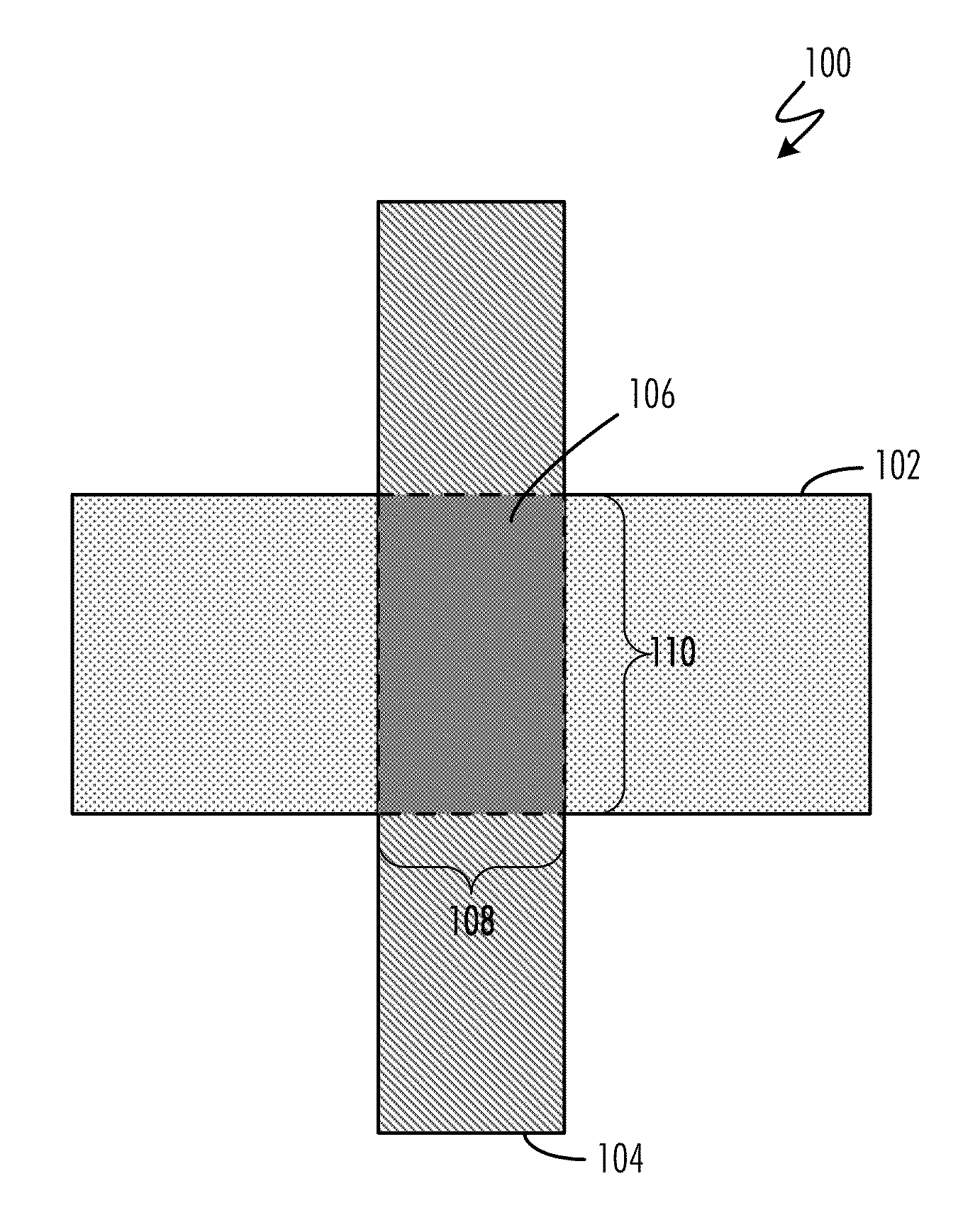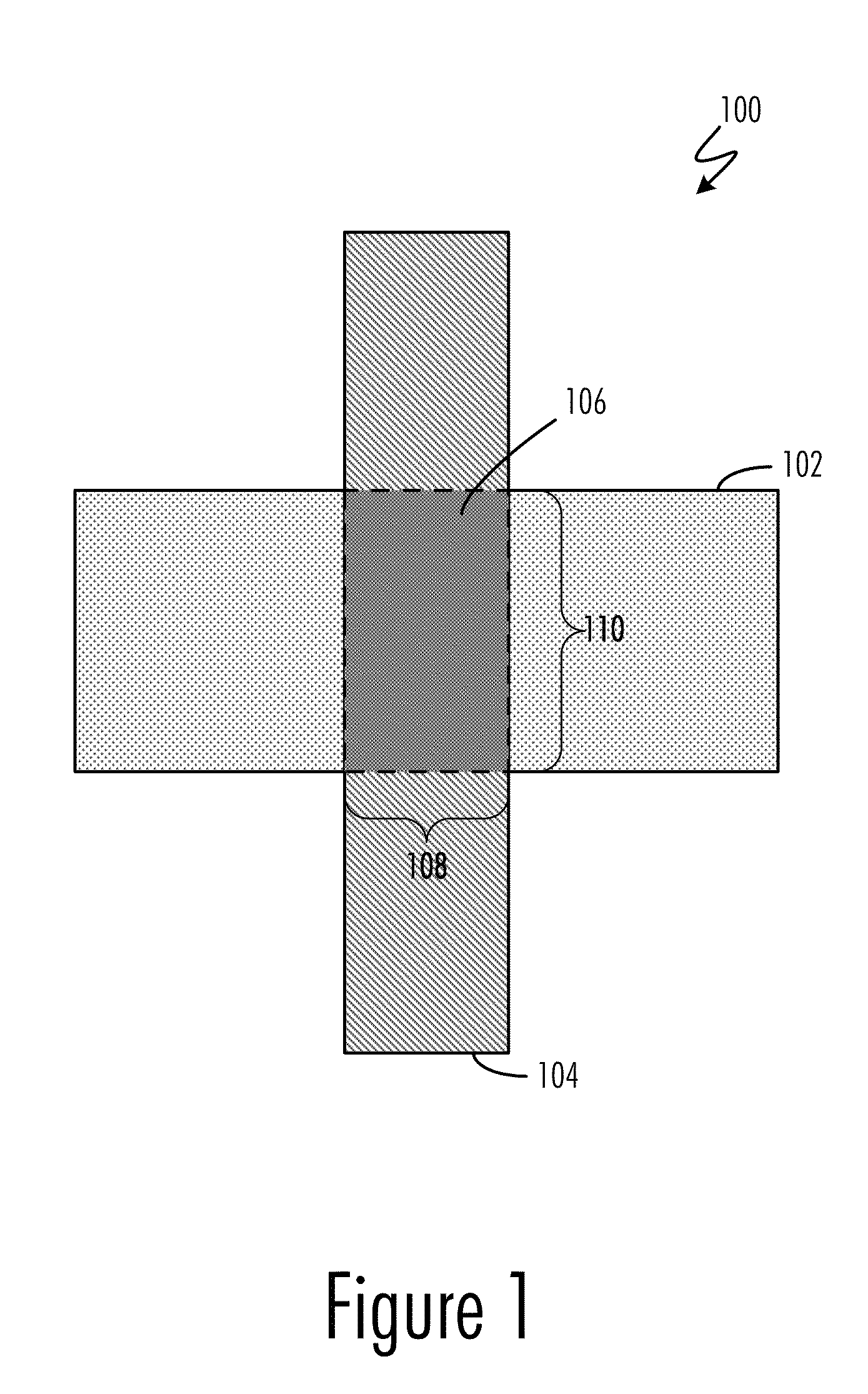Optical Proximity Correction for Improved Electrical Characteristics
a technology of optical proximity and electrical characteristics, applied in the field of computer-aided design of photolithographic masks, can solve the problems of reducing the fidelity of the image projected onto the photoresist, and not necessarily optimal electrical behavior obtained from such techniques, so as to improve optical proximity correction, improve the electrical properties of the device, and minimize the effect of edge placement error
- Summary
- Abstract
- Description
- Claims
- Application Information
AI Technical Summary
Benefits of technology
Problems solved by technology
Method used
Image
Examples
Embodiment Construction
[0021]The following is intended to provide a detailed description of an example of the invention and should not be taken to be limiting of the invention itself. Rather, any number of variations may fall within the scope of the invention, which is defined in the claims following the description.
[0022]Operation of a preferred embodiment of the present invention is illustrated with respect to an exemplary feature or “region”502 in a photomask pattern. For the purpose of this example, a purely rectangular region is selected, which would be representative of a simple polysilicon layer utilized to form the gate of a single MOSFET, such as MOSFET 100 in FIG. 1. The process of performing optical proximity correction in this preferred embodiment of the invention begins with the division of the perimeter of region 502 into a plurality of segments, such as segment 504. These segments are then grouped into two groups, shown here as group 506 and group 508. One of these groups (we will choose gr...
PUM
 Login to View More
Login to View More Abstract
Description
Claims
Application Information
 Login to View More
Login to View More - R&D
- Intellectual Property
- Life Sciences
- Materials
- Tech Scout
- Unparalleled Data Quality
- Higher Quality Content
- 60% Fewer Hallucinations
Browse by: Latest US Patents, China's latest patents, Technical Efficacy Thesaurus, Application Domain, Technology Topic, Popular Technical Reports.
© 2025 PatSnap. All rights reserved.Legal|Privacy policy|Modern Slavery Act Transparency Statement|Sitemap|About US| Contact US: help@patsnap.com



